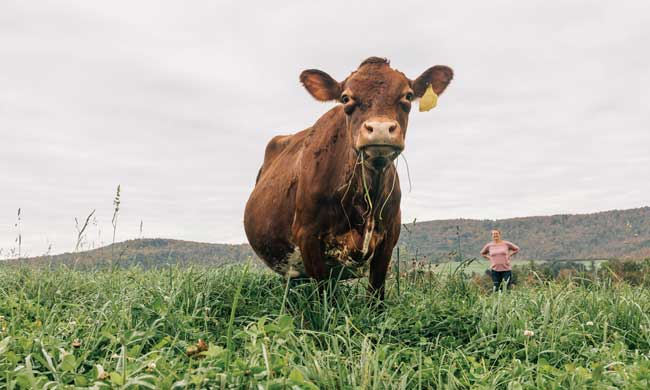HEALTHY LIVING
Air drying your hair

Believe it or not there’s a lot more to air drying hair than just letting your hair dry……. in the air. There are steps you can take to make your air dried hair look pretty epic and it’s not as hard as you might think. Follow these tips and find the air drying product for your hair type down at the bottom!
- Use a WIDE TOOTH COMB to detangle while you’re in the shower or immediately after you get out. Don’t wait too long to comb through or your curl wave pattern will break up. Find your part (if you want one) and do a quick comb through.
- Pick your favorite product from the round up below for air drying! I have different favorites for different hair needs so be sure you’re using the one best suited for your own hair. (Here we’re using the new AIR DRY FOAM for which I added a shopping link down below and more info!)
- “Scrunch” the product of your choice into your hair. Be sure to deliver the right amount to the area where your hair needs it most– for example, if you want volume, scrunch a volume-focused product into the root and work your way to the ends. If you want to focus on moisture, start at the bottom where your hair may be the driest and work your way up using a moisture-focused product.
- A long time ago I told you guys about my favorite thing for curly hair– t-shirt drying. Use an old t-shirt to squeeze excess moisture out of the hair. Using a t-shirt instead of a towel is genius because the little loops from a towel can easily cause frizz whether you realize it or not! They’re like teeny tiny little combs and sometimes hairs stick to them as you scrunch, breaking up the curl.
- Always flip your head upside down and give it a little scrunch. By doing that you can avoid that “pasted down” look that is often a result of air drying. By flipping a scrunching you’re lifting the root off your head just a little. For more volume, do this a couple times as it dries.
- Continue scrunching from the bottom up as the hair dries. Not a ton, but just a couple times here and there to encourage the wave or curl.
- If you have “puffy hair”, and it tends to get wide or super frizzy, twist your hair into a loose bun for 10-20 minutes as you air dry. Then let it to continue drying. That should help contain some of that puffiness.
- At the end, add a good HAIR SERUM of your choice! Only if you feel like you need it! If you don’t, lucky you. Sometimes just for extra polishing, I’ll take a flat iron on low heat and just finish off my ends very lightly. Sounds silly because the point of this is air drying but if you’re going somewhere and you just want it a little more refined, seal down your ends with the lightest amount of heat. You’re still skipping heat styling on 90% of the hair.
Here are my favorites for each hair type, including the one we used up top!
- R + CO CHIFFON This is more like a light leave in conditioning foam, in my opinion. I wasn’t expecting that the first time I used it. I thought it was going to be more like a regular mousse with a little hold. My hair didn’t have hold at all, it was just soft and bouncy. This is great for anyone needing additional softness when air drying. You can use this on straight, wavy or curly hair. Not going to do anything for puffy or frizzy hair, really.
- JOHN FRIEDA AIR DRY FOAM I loved this and it’s super affordable. It gives a very light hold and doesn’t feel heavy. Weightless foams are becoming very popular for air drying and this was the one we used up top. Kept the waves in and frizz out. May not be enough hold for curlier hair types though.
- LEONOR GREYL ECLAT NATUREL I’ve been using this stuff for years. I love this for over processed blondes and anyone with significant dryness. Natural oils are packed into this cream and it’s sooooooo great. It brings the most dead hair back to life. Major nourishment.
- SACHAJUAN OCEAN MIST Love this for exactly what you’d think. Beachy waves. Some ocean sprays have a lil too much grit for my liking, leaving the hair feeling like there’s a film on it. This doesn’t do that at all and it’s pretty light weight which works well on finer hair (as most ocean sprays do not).
- ORIBE CURL GLOSS Anybody air drying major curls should have this is their bathroom. It lasts a long time (which is important because it’s pretty pricey) but I love it SO much. Curly hair lacks moisture, and often lacks shine because of that. This brings back the shine in a way that just looks healthy, not wet and crunchy.
- SEBASTIAN WHIPPED CREAM This one is amazing for classic wavy hair and curly hair that needs more volume. It’s whipped and literally feels like whipped cream. It encourages waves and curls to get “bigger” but also feels moisturizing at the same time.
- LIVING PROOF CURL ENHANCING STYLING MOUSSE I like this for anyone who’s in between. So let’s say you have not-quite-wavy or not-quite curly hair. This curl enhancer will knock you into the next bracket because it actually help form stronger curl patterns.
- DR BRONNERS FAIR TRADE ORGANIC HAIR CREME Shout out to my organic, vegan- loving curly girls. This a cream formula made from organic natural ingredients. I love it for anyone who needs to “take it down a notch” with the width of their hair. If you hair gets big and wide, work some of this in from root to ends and see it settle. The weight doesn’t over-power. It just helps to calm excess volume. Also, feels like you’ve had conditioner in your hair the whole time when you go to rinse it out.
- ORIBE GEL SERUM For those of you who need MORE! If you already have wave or curl and you want it big big big, use some gel serum. I love this for wild, untamed crazy curls. It’s going to give you a MAD curly hair flip.
- SEBASTIAN POTION 9 I’ve been using this since I was a kid and I’ve used it on many hair types. It’s great for the slightest hold and for adding shine and moisture. I don’t use it every time I shampoo, just once a week or so when my fine but very thick hair feels like it needs a little extra moisture and I don’t have time to do a treatment!
Do you have any favorites for air drying?
HEALTHY LIVING
Save a life from stroke

(Family Features) Strokes can happen to anyone, at any age – even young people. Despite being one of the leading causes of death and long-term disability in the United States, strokes are largely preventable, treatable and beatable – if you can control your risk factors.
According to the American Stroke Association, a division of the American Heart Association, every 40 seconds, someone in the U.S. has a stroke. Keeping blood pressure in check, living a healthy lifestyle and knowing stroke warning signs may help protect you and your loved ones.
Here are key insights from the American Stroke Association’s Together to End Stroke initiative, nationally supported by the HCA Healthcare Foundation.
Controlling Risk Factors
Up to 80% of strokes may be preventable, according to the American Stroke Association. You can take action to prevent strokes by managing your risk factors, like high blood pressure, a leading cause and controllable risk factor for stroke and heart disease.
Other risk factors include diabetes and obesity, which can be kept in check with healthy lifestyle behaviors such as good nutrition. Quitting smoking and being physically active are important. Atrial fibrillation, or AFib, which is a quivering or irregular heartbeat, also increases stroke risk. In fact, people with AFib are five times more likely to have a stroke, according to the American Heart Association.
Preventing a Second Stroke
Nearly 1 in 4 strokes occur in people who had a previous stroke, sometimes because they don’t know what caused the first, making identifying the cause of the stroke a key step toward future prevention. Treatment depends on the type of stroke someone is having, which can be determined with a series of medical evaluations and tests.
Work with your health care professional to develop a plan that helps you move forward after a first stroke while preventing a second. This plan should include controlling risk factors, like achieving and maintaining healthy blood pressure, blood sugar and cholesterol levels.
“Preventing a second stroke is possible with the right approach,” said Teresita Casanova, MD, HCA Healthcare affiliated neurologist and American Stroke Association volunteer expert. “Taking medicines as prescribed, monitoring health numbers, and making small, consistent lifestyle changes can make a big difference. Stroke survivors should feel empowered to take control of their health and work with their care team to build a strong prevention plan.”
To help you in your journey, you can rely on tools such as the Heart & Stroke Helper, a free self-management app available for stroke survivors and their caregivers. The app allows patients to oversee their health in one place with features that track progress on lifestyle habits, manage medications, track health numbers, provide information about stroke and allow patients to connect with others for inspiration.
Find more ways to manage second stroke risk at Stroke.org

Act F.A.S.T.: How to Detect Signs of Stroke
Most adults in the U.S. don’t know the stroke warning signs, nor that stroke is largely treatable if you call 911 as soon as you recognize the symptoms.
Learning the acronym F.A.S.T. can help you recognize that someone may be having stroke symptoms so you can take life-saving action.
F: Face Drooping. Does one side of the face droop, or is it numb? Ask the person to smile. Is the person’s smile uneven?
A: Arm Weakness. Is one arm weak or numb? Ask the person to raise both arms. Does one arm drift downward?
S: Speech. Is speech slurred? Is the person unable to speak or hard to understand? Ask the person to repeat a simple sentence, like “The sky is blue.”
T: Time to Call 911. If you or anyone else shows any of these symptoms, call 911 immediately.
Photo courtesy of Shutterstock
SOURCE:
HEALTHY LIVING
How to conduct a skin care self-exam

Time spent soaking up the summer sun is one of the things that makes the season so appealing. Warm outdoor air has a calming effect that can make anyone feel more relaxed and comfortable.
As good as warm summer sun can feel, overexposure to the sun can be dangerous. The World Cancer Research Fund reports there were more than 330,000 new cases of skin cancer diagnosed across the globe in 2022. A significant percentage of skin cancer cases can be prevented, and prevention is a multifaceted process that includes skin care self-examinations. Self-exams do not take up much time, and individuals can speak with their physicians about how frequently they should check their skin for signs of skin cancer. The U.S. National Library of Medicine offers the following instructions for how to conduct a skin self-exam.
Choose the right time to examine your skin. The USNLM recommends conducting a skin exam after bathing. Women who routinely conduct breast self-exams can check their skin at this time as well.
Use a full-length mirror. ItÕs not always easy to examine skin throughout the body. But signs of skin problems can occur anywhere on the body, including areas that might be hard to see without help. If possible, conduct a self-exam of the skin in front of full-length mirror in a brightly lit room.
Identify what youÕre looking for. The USNLM notes you should be looking for any new skin markings. This includes bumps, moles, blemishes, and changes in skin color.
Pay close attention to preexisting moles. A potential sign of skin cancer includes moles that change over time. Examine preexisting moles to see if they have changed in size, texture, color, and shape.
Look for unusual moles. The USNLM characterizes certain moles as Òugly duckling moles.Ó These unique moles look and feel different from nearby moles and may be indicative of skin cancer. Speak with a dermatologist if a self-exam uncovers the presence of moles with uneven edges or differences in colors or asymmetric shapes. Moles that look different from one side to the other also should be brought to the attention of a dermatologist. Moles that do not stop bleeding or will not heal also merit examination by a skin care professional.
When the time comes to conduct the exam, the USNLM recommends following these steps:
- Look closely at your entire body, both front and back, in the mirror.
- Check under your arms and on both sides of each arm. Be sure to examine the backs of your upper arms, which can be hard to see.
- Bend your arms at the elbow, and examine both sides of your forearm.
- Examine the tops and palms of your hands.
- Examine the front and back of both legs.
- Examine your buttocks and between your buttocks.
- Examine your genital area.
- Examine your face, neck, the back of your neck, and scalp. Use both a hand mirror and full-length mirror, along with a comb, to see areas of your scalp.
- Examine your feet, including the soles and the spaces between your toes.
- Ask a person you trust to help examine hard-to-see areas.
Skin cancer poses a formidable threat, but many cases of the disease are preventable. Routine skin self-exams are a vital component of skin cancer prevention. TF256909
HEALTHY LIVING
What does 100% grass-fed organic dairy bring to your table

(Family Features) It’s no secret that many grocery store dairy sections are filled with more options today. One choice continuing to gain favor with consumers is 100% grass-fed organic dairy. Nutrition, environmental awareness and animal care are some of the leading reasons consumers choose grass-fed dairy products.
Globally, the 100% grass-fed dairy market is projected to continue growing and some market experts predict annual growth rates as high as 22%. If you’re curious about 100% grass-fed organic dairy, consider these benefits from Maple Hill, America’s original 100% grass-fed organic dairy producer. The pioneer of 100% grass-fed organic dairy took its commitment a step further by celebrating and declaring National 100% Grass-Fed Organic Dairy Day on April 15, which recognizes the positive impact it has on consumers, cows, farmers and the environment.
1. Honoring the Farmers
Unlike large-scale corporate dairy farms, most organic farms are small, family-owned operations dedicated to traditional, sustainable farming. Small dairy farms have been disappearing, but 100% grass-fed organic dairy creates a sustainable, viable path forward for farmers who work in harmony with nature.
This more natural approach to dairy is a “craft” process favoring small family farmers who are willing to dedicate the extra focus and patience to a better product and process. These family farms are passed on to future generations to grow the “better for you, better for the planet” approach.
2. Commitment to Good Health
Most consumers don’t know the difference between traditional organic and 100% grass-fed organic dairy. One key distinction is the products’ nutritional composition; 100% grass-fed organic dairy provides a 50% healthier ratio of omega 3:6 and 40% higher levels of CLA fatty acids, which may support heart health and provide other health benefits.
What’s more, Maple Hill’s products made with 100% grass-fed organic dairy are GMO free, hormone free and antibiotic free with no additives or fillers. The line of high-quality, rich-flavored products let you experience the organic difference from traditional dairy for a nutrient-dense solution that tastes as nature intended.
3. Happy, Healthy Cows
Cows on a 100% grass-fed diet can live up to three times as long as grain-fed cows and are never subjected to unnatural diets, hormones or antibiotics. More time in pastures filled with lush grass means cows have the freedom to roam, ruminate and graze on diverse, nutrient-rich grasses.
The result is happier, healthier cows, which in turn results in a richer, better-tasting and more nutrient-dense milk.
4. Sustainability and the Environment
Producing milk without grain or corn requires farmers to focus on regenerating soil and the soil life that supports everything else on the farm. In fact, the healthier the soil, the healthier the feed, so farmers have a natural incentive to be as regenerative as possible. Regenerative grazing practices are a powerful and positive tool to improve land and the web of life on farms by actively restoring soil health, promoting biodiversity and reducing the environmental impact compared to conventional dairy.
Well-managed grazing helps pull carbon from the atmosphere into the soil, fighting climate change in the process. In addition, healthier soil retains more water, reducing runoff and protecting water sources from agricultural pollution.
5. Strengthening the 100% Grass-Fed Organic Market
Consumers are increasingly aware of the choices they have in dairy products and how 100% grass-fed organic supports their health, farmers, animals and the planet. Some ways to support this category’s continued growth include choosing certified 100% grass-fed organic dairy, advocating for regenerative farming and helping shape a more sustainable food system.
Learn more about 100% grass-fed organic dairy products at maplehill.com.
SOURCE:
-

 NEWS3 years ago
NEWS3 years ago2 hurt, 1 jailed after shooting incident north of Nocona
-

 NEWS2 years ago
NEWS2 years agoSuspect indicted, jailed in Tia Hutson murder
-

 NEWS2 years ago
NEWS2 years agoSO investigating possible murder/suicide
-

 NEWS2 years ago
NEWS2 years agoWreck takes the life of BHS teen, 16
-

 NEWS2 years ago
NEWS2 years agoMurder unsolved – 1 year later Tia Hutson’s family angry, frustrated with no arrest
-

 NEWS2 years ago
NEWS2 years agoSheriff’s office called out to infant’s death
-

 NEWS2 years ago
NEWS2 years agoBowie Police face three-hour standoff after possible domestic fight
-

 NEWS3 years ago
NEWS3 years agoDriver stopped by a man running into the street, robbed at knifepoint








